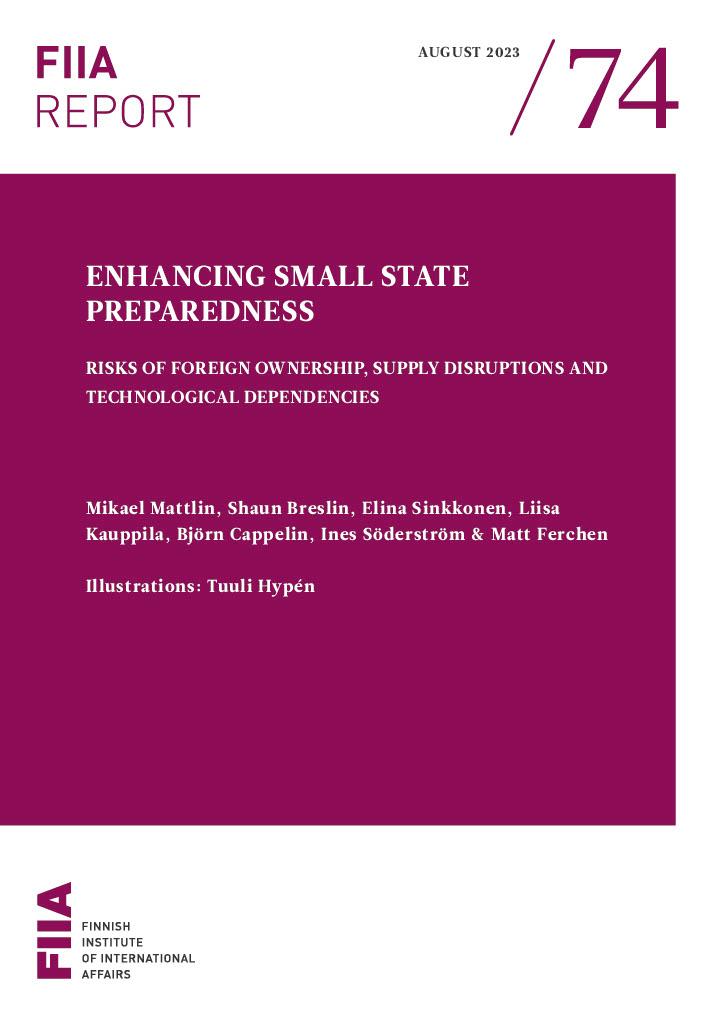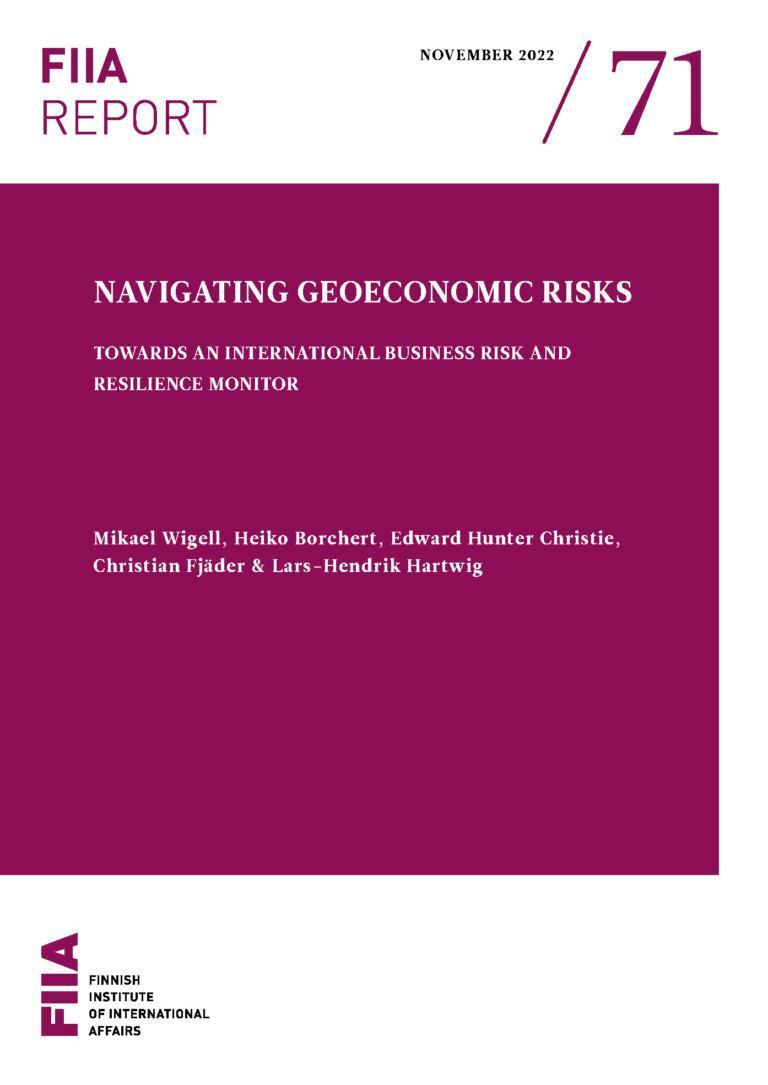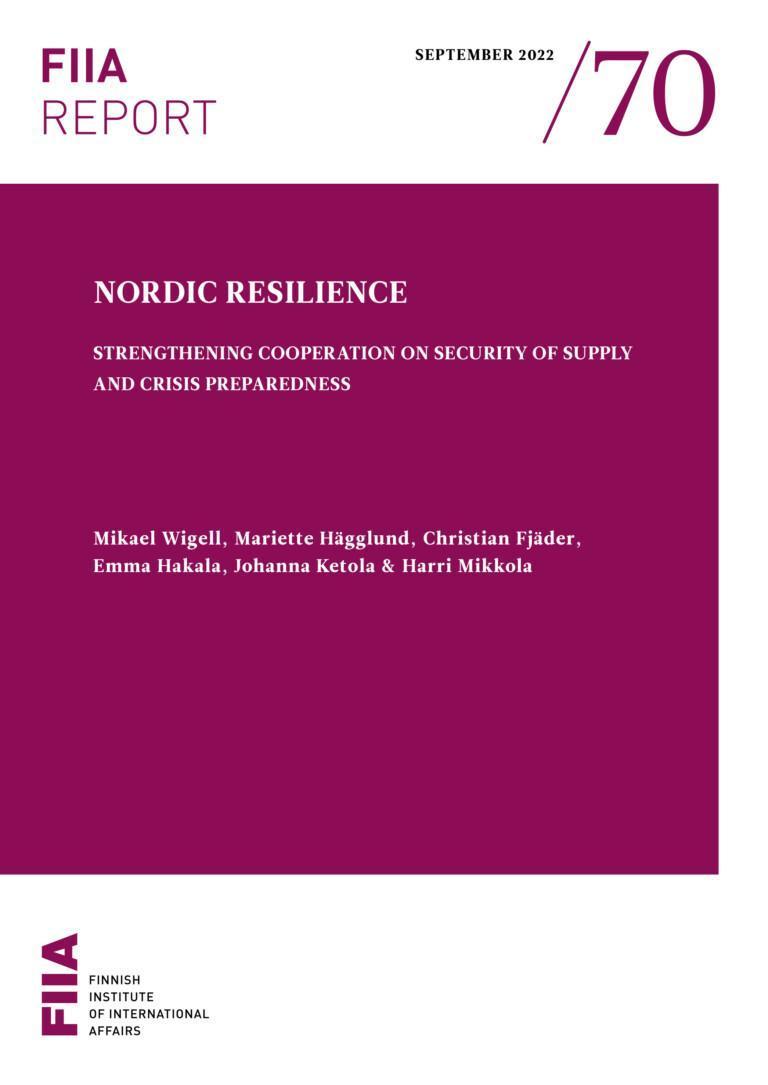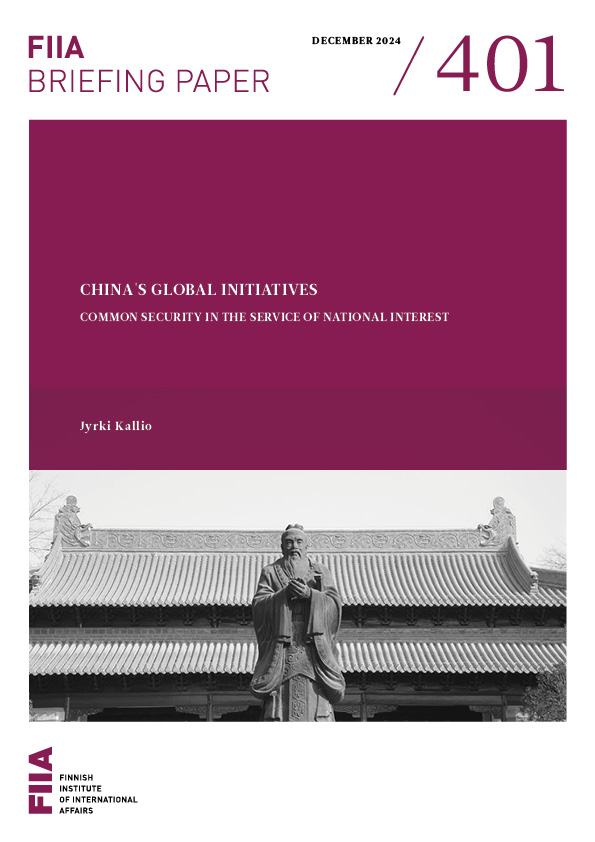The post-Cold War liberalist view, according to which interdependences supported a virtuous cycle of mutual gains, has given way to a realist-tinged view that regards economic interdependence as a cause of insecurity and an element in conflicts. In this new environment of increasing great power competition and technological decoupling, all states are not created equal. Major states such as the United States and China can be system shapers, whereas small states tend to be system takers. Unlike smaller states, they have a greater ability to use their investment leverage, supply chain dominance and control of core technologies. For smaller states with open economies, such as Finland and Sweden, these capabilities of major powers create vulnerabilities in the form of security risks of foreign ownership, supply disruptions and critical technological dependencies.
The report explores how small states can mitigate such risks. A series of innovative Delphi backcasting exercises in Finland and Sweden brought together 113 sectoral experts and generalists to ponder ways to prevent dystopian scenarios from unfolding. The target years of the scenarios extended from 2027 to 2035, encouraging ideas on both short- and longer-term solutions. Instead of aiming for a consensus of expert views, the process sought to produce a variety of effective means and measures that a small state could choose to adopt.
The exercise consisted of nine scenarios, presented as comic art. The narratives on the risks of foreign ownership focused on 1) acquisitions of gaming companies gathering personal data, 2) transfers of real estate ownership in Lapland and 3) venture capital investments in emerging technology start-ups. The scenarios on supply disruptions dealt with 4) discriminatory practices limiting access to antibiotics, 5) political retaliation limiting access to water treatment components and 6) sanctions on wind power materials, components and minerals. As for high technology dependencies, the cases included 7) the maintenance of military technology, 8) the cybersecurity of health technology and 9) the supply of chemicals for research and development activities.
According to the report, small states have the least leeway in navigating the risk environments created by technological dependencies, whereas the toolkits to tackle the potential dangers of foreign ownership and supply disruptions are more extensive. Although different issues and insecurities require different bespoke solutions, all the risk categories call for active mitigation efforts. Most of the suggested Finnish and Swedish expert solutions can be clustered into three alternative approaches: protectionist/interventionist, liberal and technologically oriented.
Protectionist/interventionist solutions would expand the state’s powers in controlling, guiding and limiting economic activities. Key suggestions included:
- covering acquisitions and greenfield investments in national foreign direct investment screening
- screening real estate acquisitions with a wide range of countries of origin
- imposing country-specific limitations to real estate acquisitions
- screening venture capital investments in emerging technologies
- initiating a national security act to limit foreign control rapidly
- imposing country- and company-specific limitations to bids in critical industries
- increasing tariffs
- supporting domestic or EU-level production through subsidies and industrial policy
- friendshoring the production of critical goods
- expanding the scope of supply stockpiling in pharmaceuticals and water treatment components
The more liberal approach towards national preparedness would focus on solving the challenges primarily through carrots instead of sticks – to avoid limiting entrepreneurial freedoms and interfering with the dynamics of the capitalist market economy. The proposed solutions included:
- initiating value debates to guide individuals’ choices when accepting investments
- formulating a national innovation strategy to boost domestic companies’ operating conditions in emerging technology fields
- teaching “technology literacy” to guide the use of foreign-owned products
- engaging all stakeholders in making decisions on foreign ownership
- diversifying the sources of critical goods such as antibiotics
- enhancing awareness of risks and making “plan Bs” in supply chain management
- deepening the EU’s single market to offer genuine scalability opportunities for start-ups
The third, more technologically oriented approach would rely on new innovations or technical solutions to enhance small state preparedness. Key ideas included:
- innovating new medicines to replace antibiotics
- prioritising non-conventional technologies such as small modular reactors (SMRs)
- enhancing domestic capacity to produce key components with 3D printing
- researching alternative materials to replace critical chemicals
- developing the recycling, recovery and transportation of critical chemicals
- adopting geofencing and coding solutions to enhance cybersecurity
- designating emerging technologies as focus areas in higher education
- increasing the adaptability of technical solutions through standardisation
These three approaches prioritise different key solutions for enhancing small state preparedness. However, they represent generic policy preferences rather than ready-made policy recommendations. Ideally, states can formulate their own pick-and-mix toolkit by combining elements from the different approaches. The complementary nature of some of the expert views was also suggested by the fact that many – even most – respondents argued for diversification as a solution to various challenges. For example, and regardless of the chosen strategy, tendering rules could be improved by placing quality over price, taking geopolitical risks into account and allowing multiple winners in contrast to the currently dominant winner-takes-it-all logic, which leads to overly concentrated supply chains. Moreover, at least minor legislative tightenings were widely proposed to be made on foreign ownership – especially with regard to that of nationals of authoritarian states. These changes were, however, typically proposed to be complemented with such balancing acts as long-term leases and incentives to develop and acquire domestic products and companies.
Ultimately, by highlighting alternative approaches to small state preparedness, this report seeks to encourage democratic discussion on a broader political choice: what type of state and economy do we want in the future? It is not only their identity that guides what states do; adopted policies and means also shape state identities over time.













